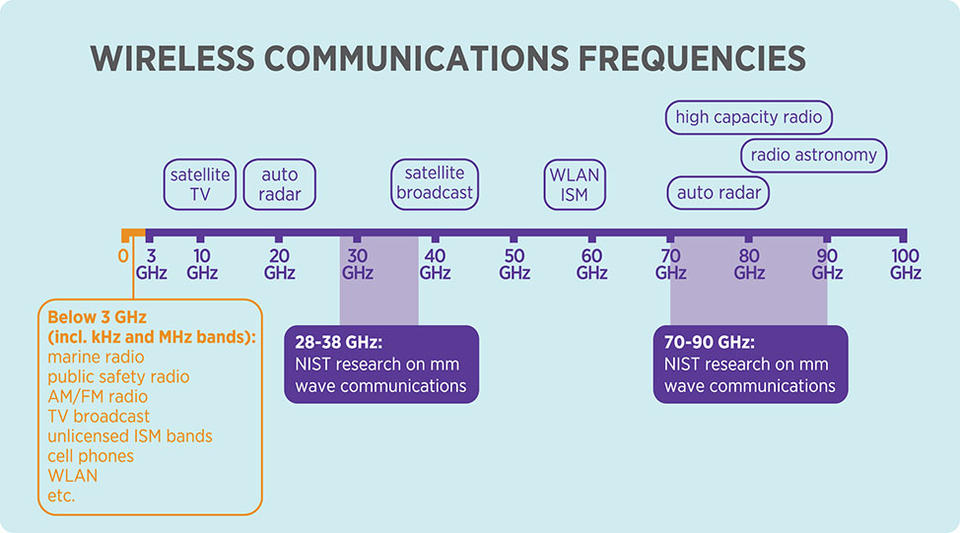The National Institute of Standards and Technology (NIST) has formed an international alliance with about a dozen telecommunications companies and universities to model and measure wireless channels at much higher frequencies than those used today to hasten the development of future cellphones and other devices.
NIST created the group to help meet a global surge in demand for wireless data transmission and capacity. As telecommunication frequencies go higher, the behavior of wireless signals changes. Different factors, like structures in the way, affect signal loss and distortion. Accurate models based on real-world measurements are needed to design not only the optimum system hardware but to develop standards that drive the underlying protocols for handling the transmissions. The work is challenging, in part because the technologies don't exist yet.

The 5G mmWave Channel Model Alliance will focus on 3D channel modeling at high frequencies, or millimeter wavelengths, addressing how a wireless signal would propagate in different bands of the spectrum. The alliance will also focus on directional channel sounding, which involves measuring whether signals are distorted or lost in a given channel. NIST and others in the global community are developing mmWave measurement tools. Leveraging measurements from multiple research groups could enhance the value of channel models for predicting device performance in this as-yet untouched frequency spectrum.
A number of groups have already formed around the world to study mmWave channel modeling. These groups include the international standards organization IEEE, consortia in Europe and Asia, and invitation–only special interest groups.
"The current work is very diverse, using different bands of the spectrum, different channel sounders and different propagation environments," says Kent Rochford, director of NIST's Communications Technology Laboratory. "Sharing this diverse information may provide a general improvement in channel modeling."
"Channel models are a starting point for standards activities and will be key for mmWave standards. NIST has been asked by some companies to convene a forum for open sharing of results. Our goal is to provide a venue for openly sharing measurement methods, modeling methods, data and channel models."
NIST launched the alliance with a meeting in July 2015 and plans the first working group meetings this month. Intended products include:
- Raw data measurements in key usage scenarios;
- Measurement and calibration techniques;
- Channel modeling techniques; and
- Improved, comprehensive, predictive channel models that can be fed to standards organizations for the development of future mmWave wireless communication systems.
Participants in the kickoff meeting included representatives from the Federal Communications Commission, Qualcomm, Samsung, Nokia, Intel, Huawei, Keysight, Rohde & Schwarz, National Instruments, the University of Southern California, Georgia Tech, the University of British Columbia in Canada, the Fraunhofer Institute, and the Ilmenau University of Technology in Germany.
Additional companies and universities have expressed interest in joining. There is no membership fee. To support the alliance, NIST created a wiki platform to facilitate virtual collaboration among participants and publish meeting notes and outcomes. The charter is available at https://sites.google.com/a/corneralliance.com/5g-mmwave-channel-model-alliance-wiki/organizational-charter. A brochure is available at http://www.nist.gov/ctl/upload/5G-Millimeter-Wave-Channel-Model-AllianceV2.pdf. Technical contacts are Kate Remley at kate.remley [at] nist.gov (kate[dot]remley[at]nist[dot]gov) and 303-497-3652; and Nada Golmie at nada.golmie [at] nist.gov (nada[dot]golmie[at]nist[dot]gov) or 301-975-4190.

